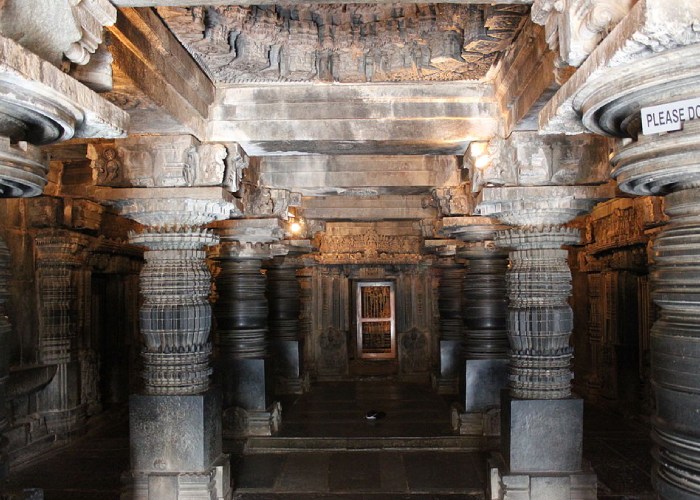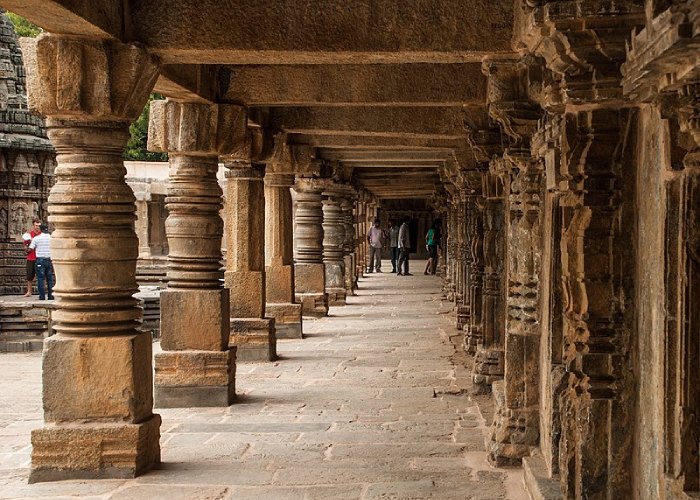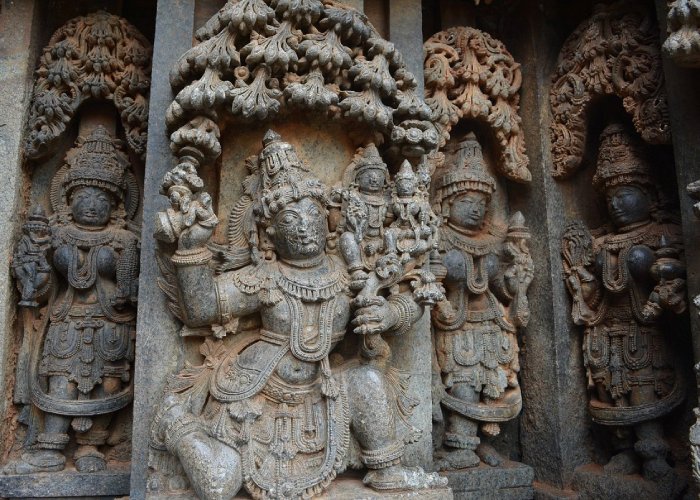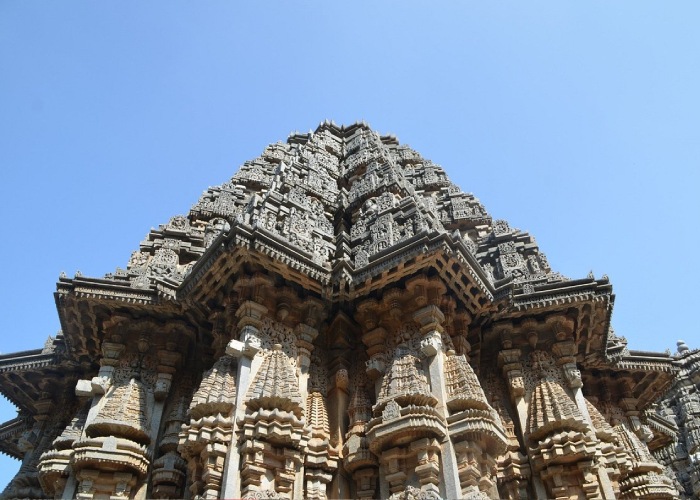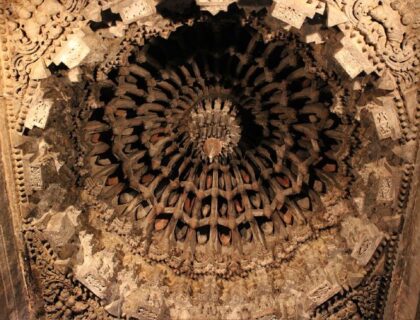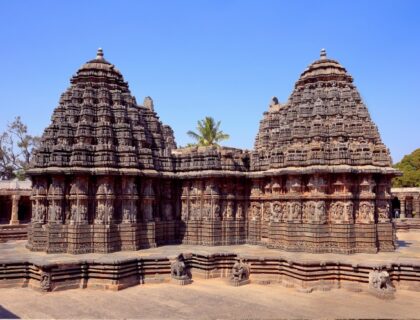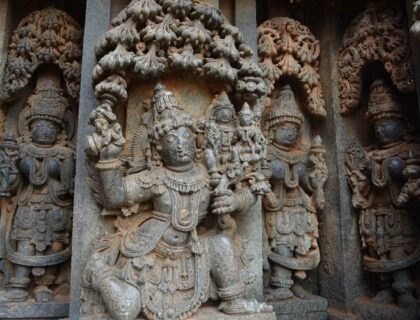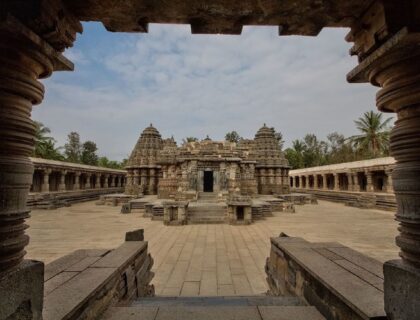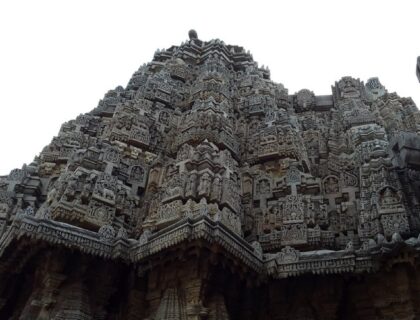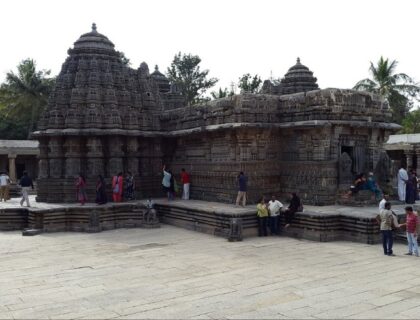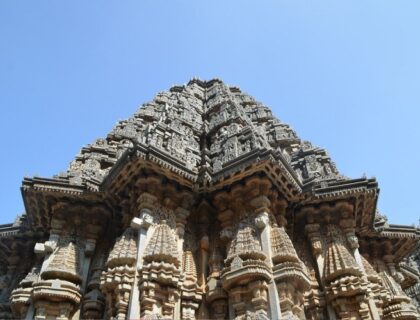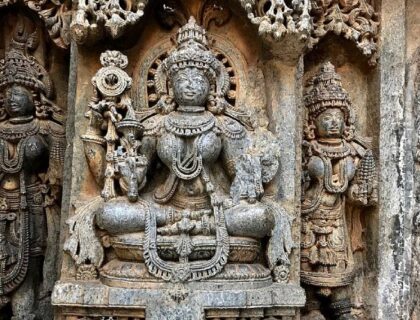Chennakeshava Temple Somanathapura
The Chennakeshava Temple, also known as Keshava Temple, is a Vaishnava Hindu temple located in the Somanathapura town of Karnataka, India. The temple was developed in 1258 CE by Somanatha Dandanayaka, a general of Hoysala King Narasimha III. The temple is 38 kilometres (24 miles) east of Mysuru.
Keshava Temple Somanathapura is a well-known shrine in Karnataka, located in the Mysore district. The holy Cauvery River flows through the small village of Somanathapura, while the lush greenery encircling the temple allows prayers to come deep from your heart in a peaceful setting.
Significance of the Chennakeshava Temple
The ornate temple serves as a model for Hoysala architecture. The temple is surrounded by a courtyard and a pillared corridor lined with small shrines. The main temple in the centre is on a high star-shaped platform with three symmetrical sanctums (garbha-griha) set in an 89′ x 89′ square matrix oriented east-west and north-south. The western sanctum housed a statue of Kesava (which is now missing), the northern sanctum of Janardhana, and the southern sanctum of Venugopala, all of whom are manifestations of Vishnu. The sanctums are connected by a large community hall (sabha-mandapa).

The temple’s outer and inner walls, pillars, and ceiling are intricately carved with Hindu theological iconography and display extensive friezes of Hindu texts such as the Ramayana (southern section), Mahabharata (northern section), and Bhagavata Purana (western section of the main temple).
History of Chennakeshava Temple
According to 15th-century inscriptions, the Kesava temple also suffered significant damage. It was repaired in the 16th century with financial assistance and grants from the Vijayanagara Empire’s emperors. The different colours of stones and the quality of work in the veranda and parts of the northern tower and platform of the main temple attest to the repairs. The repaired temple was damaged in the nineteenth century and then repaired again in the early twentieth century by the Mysore government during the colonial era.

The Kesava temple is one of about 1,500 Hindu and Jain temples built by Hoysala Empire kings throughout their kingdom. Other well-studied Hoysala temples include those at Belur and Halebidu. The temple was destroyed during Muslim attacks in the Hoysala kingdoms. The first attack was launched in 1311 by Malik Kafur, Alauddin Khilji’s general, and the remaining structures were destroyed in 1326 by Muhammad Bin Tughlaq. Some of the temples were restored by the Vijayanagara Kings and later by the Wodeyars of Mysuru.
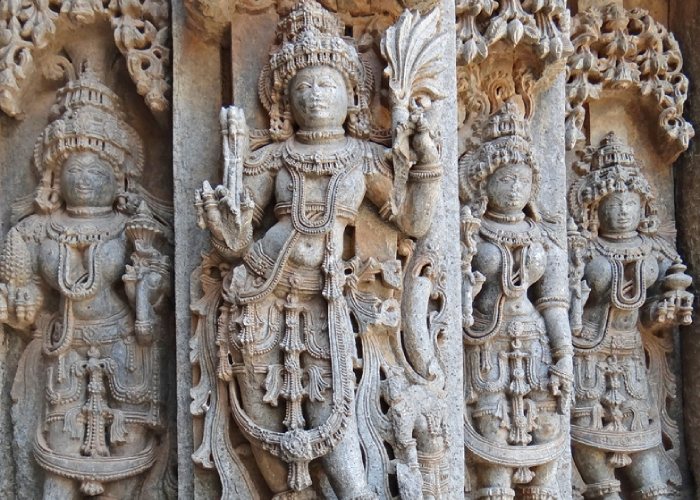
The majority of these inscriptions confirm that the temple was in use around the mid-13th century. Two inscriptions, one dated 1497 CE and the other 1550 CE, describe the temple’s damage and repairs. The temple contains numerous small inscriptions that are either mason guild logos or the name of the artist who carved the block, pillar, or artwork.
Architecture of Chennakeshava Temple
The Chennakesava temple is a Trikuta temple, which means it has three shrines. Each shrine has its own Sukanasi and Vimana. The porch has decoratively sculpted lathe-turned pillars. The three shrines, along with the Vimanas and Sukanasis, are perfectly symmetrical. The shrines are constructed on a raised platform. The three shrines are designed in the shape of a 16-point star.

The temple has two eaves and decorative miniature towers run between them. A running frieze of around 200 panels depicting various Hindu deities runs beneath the lower eaves. A frieze of panels depicting scenes from the great Indian epics can be found on the lower level. The south side walls have panels depicting scenes from the Ramayana, the back wall has panels depicting Sri Krishna’s life, and the north side wall depicts scenes from the Mahabharata.

The three shrines are dedicated to three manifestations of Vishnu, most notably Krishna. They used to house the intricately carved idols of Keshava, Janardhana, and Venugopala. The Keshava Idol is no longer present, but the other two remain in their original form.

The main temple is constructed on a jagati, which represents a worldly platform. It is about 3 feet tall, star-shaped, and has stone steps leading up to it on the east end. There are two dvarapala (guardian) shrines on each side of the stairs, but they are damaged.
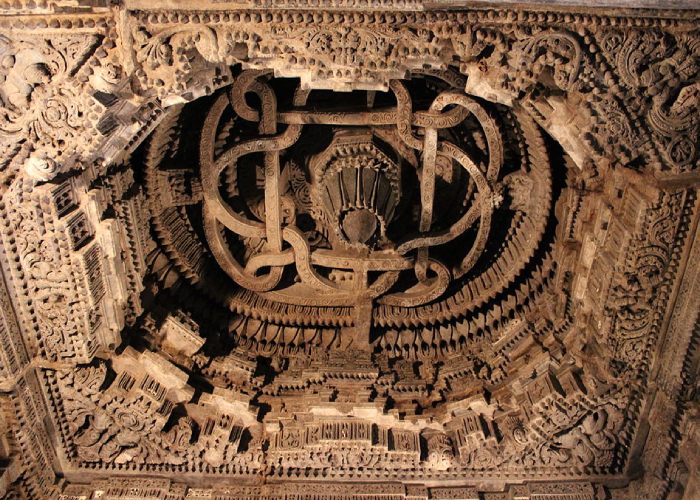
The platform’s eastern side is rectangular, while the space beneath the vimana (temple tower) is shaped like a pointed star, with nine points on each side and two connecting edges (for a total of 29). Each star point end of the platform used to have a stone elephant, but only 11 of the original 15 have survived in a damaged state.
Best Time to Visit Chennakeshava Temple
This place is very heavenly and spiritual, and you can visit it all year. The best time to visit this temple, however, is during the monsoon and winter seasons. During the monsoon season, this location receives moderate to heavy rainfall, making it appear heavenly with its greenery and bringing freshness elsewhere.
Facts about Chennakeshava Temple
- The Chennakesava Temple is located in Somanathapura town in Mysore district.
- This beautiful temple is dedicated to Lord Vishnu. The temple is now under the administration of the Archaeological Survey of India (ASI).
- The Chennakesava Temple in Somanathapura, built during the reign of Karnataka’s Hoysala Dynasty, exemplifies the prolific skills of the sculptors of the time.
- This ornately chiselled ancient Indian temple is located near Mysore and is also accessible by road from Bangalore.
- As a non-functional temple, it only opens at 8:30 a.m. and closes before the sun sets at 5:30 p.m.
- Somanatha Dandnayaka, a general in the Hoysala kingdom under King Narasimha III, built the Somnathpur Keshava Temple in the 13th century.
- During Muslim attacks in the Hoysala kingdoms, the Somnathpur temple was destroyed. Malik Kafur, Alauddin Khilji’s general, launched the first attack in 1311, and Muhammad Bin Tughlaq destroyed the remaining structures in 1326.
- As per the information from the Archaeological Survey of India, the original idol of Lord Keshava went missing and later it was replaced.
- The Trikutchala form is represented by the Keshava temple. The temple has three sanctums to the north, south, and west. Within the temple, there are three antaralas and one navarang.
- The interior and exterior walls of the Keshava temple are known for their fine carvings. The ceilings and doors are also beautifully ornamented.
- The Keshava Temple has a relief sculpture of Narasimha on its outer wall.
- The sanctum’s ceilings are adorned with spectacular shikhara images of Keshava, Venugopala, and Janardhana.
- While the central sanctum is dedicated to Lord Keshava, the southern sanctum is home to Lord Venugopala’s deity, and the northern sanctum is home to Lord Janardhana’s idol.
How to reach Chennakeshava Temple
By Air: The Bangalore International Airport is the nearest airport to Somanathapura.
By Railway: The Mysore railhead is the closest railway station to the Keshava Temple. Trains to Mysore run frequently from Chennai, Mumbai, and Delhi. Tourists can take taxis to the Keshava Temple from the Mysore railway station.
By Roadways: The Keshava temple is nearly two hours drive from Bangalore, located 180 kilometres away. Taxis are available to transport you to the site. The road from Maddur to Malavalli to Bannur to Somnathapura is the best way to get to the Keshava Temple.
Also Read – Ashtabuja Perumal Temple
Support Us
If our content helps you even 1% in gaining information about the temple, please support us by contributing any amount, our UPI ID is - q417999792@ybl Or pay using QR CODE >>> Click Now
Location
Facilities
- Drinking Water


